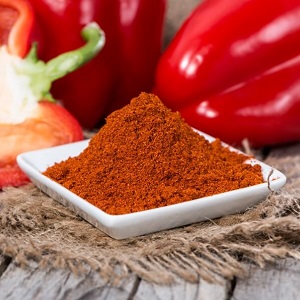- No. 268 Xianghe Street, Economic Development Zone of Xingtai city, Hebei 054001 China
- Byron@hbhongri.cn
chilli pods
The Diverse World of Chili Pods
Chili pods, often referred to as dried chili peppers, are a staple ingredient in many culinary traditions around the globe. From the vibrant streets of Mexico to the kitchens of Southeast Asia, these little pods pack a punch, not only in flavor but also in richness of culture and history. The science and art of using chili pods have transformed countless dishes, elevating them with their unique heat and dynamic flavor profiles.
Chili peppers belong to the Capsicum genus and are cultivated in various forms and sizes worldwide. They range from the mild and sweet bell peppers to the fiery ghost peppers and Carolina reapers, which can bring tears to the eyes of even the most seasoned spice lovers. When dried, these peppers create chili pods that can range in color from deep reds to bright yellows and even dark browns. The drying process concentrates the flavors and heat, making them a versatile ingredient for various culinary applications.
Culinary Uses
In the kitchen, chili pods can be used whole, crushed, or ground into powder, allowing chefs a variety of options for integrating spice into their dishes. In Mexican cuisine, for example, dried chili pods like ancho, guajillo, and pasilla are essential for making sauces such as mole and enchilada sauce. They add rich, smoky, and sometimes fruity flavors that are distinctive to these traditional recipes.
In Italian cooking, chili pods like the Calabrian pepper are often used to spice up dishes. Whether in pasta sauces or sprinkled over pizzas, these dried chili peppers enliven the palate with a warmth that perfectly complements savory ingredients. Similarly, Asian cuisines, such as Thai and Indian, utilize dried chilies to enhance flavor in curries and stir-fries, showcasing the pod’s versatility across different dishes.
Health Benefits
chilli pods

Beyond the kitchen, chili pods have also gained recognition for their potential health benefits. They contain a compound called capsaicin, which is responsible for their characteristic heat. Research suggests that capsaicin may have anti-inflammatory properties, serve as a natural pain reliever, and even aid in weight management by boosting metabolism. Additionally, chili pods are rich in vitamins A and C, antioxidants, and essential minerals, making them an excellent addition to a balanced diet.
Thriving Culture
The culture surrounding chili pods is vibrant and diverse. Chili festivals, markets, and culinary competitions celebrate this beloved ingredient worldwide. For instance, in New Mexico, the Hatch Chile Festival invites locals and tourists alike to revel in various chili-based dishes, with the New Mexico chili standing as a proud symbol of the state's culinary identity. In other parts of the world, annual spice festivals highlight the significance of chili peppers in local cooking traditions, showcasing the creativity and passion that chefs infuse into their culinary creations.
Growing Your Own
For those yearning for a personal touch, growing your own chili peppers can be a fulfilling endeavor. With a range of varieties available, from sweet to extremely hot, hobby gardeners can cultivate plants that suit their taste and heat preference. Whether in a backyard garden or a small balcony, nurturing chili plants can yield fresh pods that can be dried and used in cooking, creating a sense of connection to the food we consume.
Conclusion
Chili pods are more than just a spice; they represent a confluence of flavors, cultures, and health benefits that enhance our culinary experiences. From traditional dishes to innovative culinary creations, these dried peppers showcase the profound impact of spices on our taste buds. As we continue to explore their potential, it becomes evident that chili pods will remain an integral part of our culinary landscape, bringing heat, flavor, and heart to our plates. So, whether you are a novice cook or a seasoned chef, don’t hesitate to incorporate these fiery little gems into your next dish!
-
Turmeric Rhizome Powder: A Golden Treasure from Roots to TableNewsJul.28,2025
-
The Versatile Application Of Crushed Red Hot Peppers: Lighting Up The Red Flames On The Dining TableNewsJul.28,2025
-
The Paprika: A Touch Of Vibrant Red In Color, Flavor, And CultureNewsJul.28,2025
-
Ground Turmeric: A Modern Examination of an Ancient SpiceNewsJul.28,2025
-
Capsicum Liquid Extract: Features, Applications, and ChallengesNewsJul.28,2025
-
Application of Capsicum Liquid Extract in FoodNewsJul.28,2025







